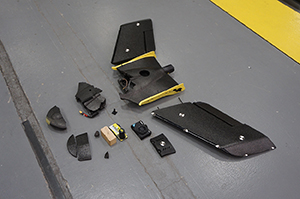News at the HPC²
Appropriation Announced for FAA's UAS Center of Excellence for UAS Research
September 24, 2019 With $12 million heading its way, the Federal Aviation Center of Excellence for Unmanned Aerial Systems Research will continue to work with FAA institutions on drone safety and regulation.
With $12 million heading its way, the Federal Aviation Center of Excellence for Unmanned Aerial Systems Research will continue to work with FAA institutions on drone safety and regulation.Appropriations were announced by the office of Republican Sen. Cindy Hyde Smith, bringing $24 million to UAS research, including $12 million to the center. The announcement came along with several other grants and appropriations across the state Thursday. Mississippi State University serves as the manager of the center and the Alliance for System Safety of UAS through Research Excellence (ASSURE). ASSURE is composed of several partner universities in the U.S., United Kingdom, Canada and Israel.
Executive Director Stephen “Lux” Luxion said the $12 million was around the center’s usual funding.
“We’ve been around that $12- 14 million,” Luxion said. “It’s in the ballpark of what we’ve been getting every year."
He discussed some of the center’s ongoing projects and research areas using which would use some of the funds, among other sources.
“I was just at a program meeting with the FAA and all of our coordinating universities, and Mississippi State leadership there and then a follow-up international roundtable with researchers and regulators from around the globe,” Luxion said.
Using information from the meeting, the FAA will come up with requirements for the upcoming year.
Luxion said some of the center's current projects with the FAA involved collision studies and coming up with regulations for commercial drones potentially operating in urban airspace. The appropriation usually lasts about a year with the center working on the projects set out for it by the FAA.
“We’ve been doing a lot of work regarding operations over people,” Luxion said. “For the most part, how do you certify an operation for flying over top of people? The commercial industry needs two things, one of them is flying over people, like package delivery, just a UAV flying over anything when there’s people around.”
He said the commercial industry also needed concrete standards set.
“We’ll do another small study to validate our test model and get our test model published,” Luxion said.
He said the second critical factor for commercial operators was the ability to fly beyond visual line of sight with the aircraft.
“That involves detect and avoid technology,” Luxion said. “When there’s a man in an airplane, he’s got see and avoid responsibilities. Without anyone on board, a UAV needs technology to detect with. We’re in the middle of testing different methodologies on how to define what the minimum performance standards for such systems will be and then again, the methodologies to certify that.”
He also said some research was being done into the use of UAVs in disasters and emergency situations, as well as changes in operational rules surrounding them.
“We’re in the process of kicking that research off for the FAA,” Luxion said. “We’re working with federal, state and local emergency management agencies and first responders on what their needs are, and how UAVs, small, medium, large can play into the scenarios and help the FAA get those quickly integrated into the airspace in these emergency situations.”
He said the emergency response project would take place over at least three or four budget periods.
Additional projects include integrating UAVs into different types of airspace and seeing results of one person being in charge of multiple UAVs at once.
